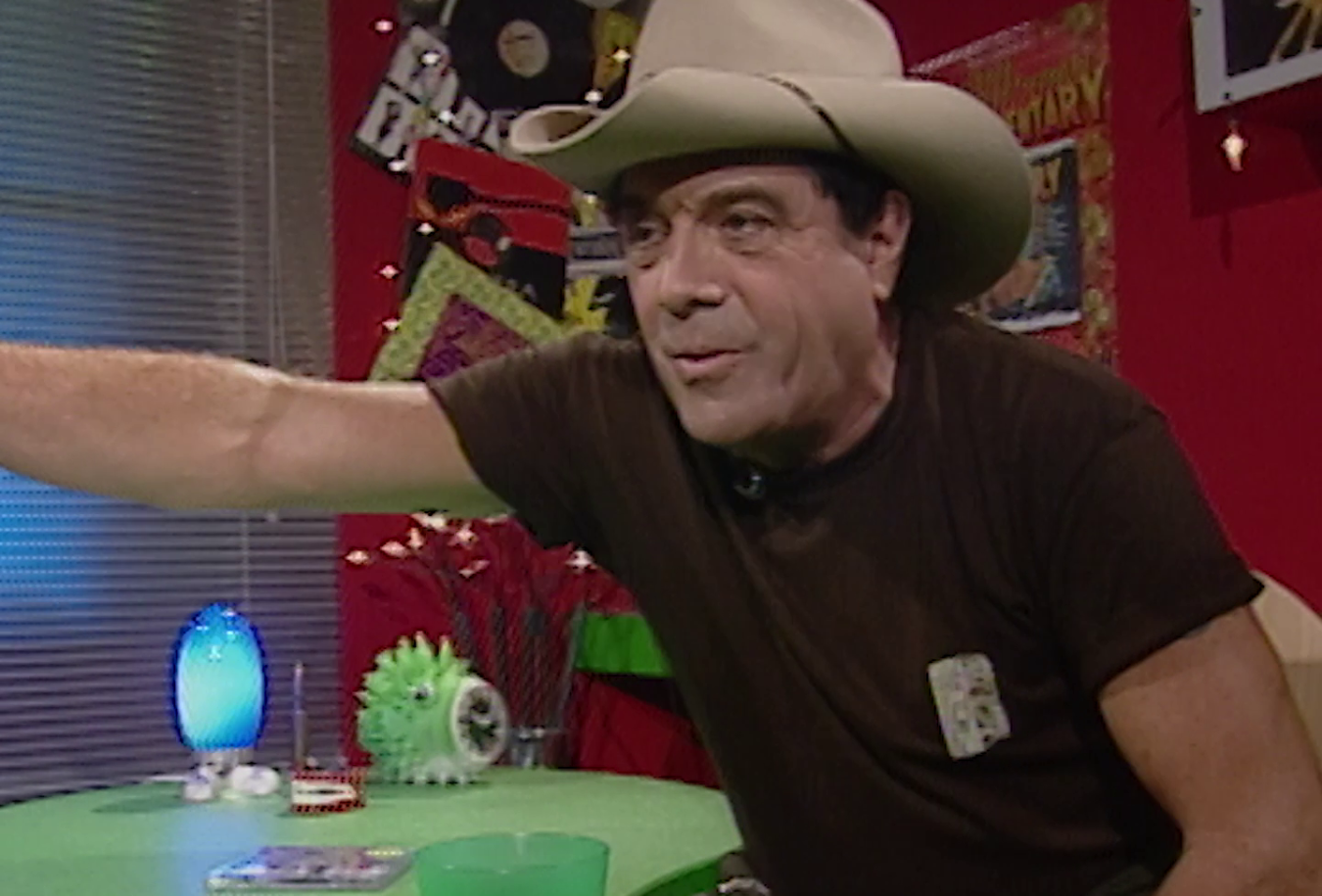
The Squatter’s Daughter: Flammable finale
As the rescue party escorts the 3,000 sheep to safety, Clive (John Warwick), Joan (Jocelyn Howarth) and Wayne (Grant Lyndsay) are still caught in the fire. They make for a waterhole, but the fugitive Fletcher (Les Warton) has got there first. He refuses to let them in the water – all except his own son, Clive, with whom he plotted Joan’s ruin. As the fire rockets toward them, Fletcher divulges his secret – that Wayne is the real heir to Waratah Station – and then shoots Clive, by mistake. Wayne and Fletcher fight, as the conflagration arrives. Summary by Paul Byrnes.
The speed of the approaching fire in the last few seconds of the clip gives some sense of how frightening this scene was to film. The flames have been encouraged by the addition, concealed amongst the trees, of large amounts of extremely flammable nitrate film, doused with old sump oil and diesel fuel. There appear to be voices other than the actors on the soundtrack, perhaps expressing the concern behind the cameras. Between the start of the final shots and the end, as the camera pans up with the flames, the actors scrambled across the pond to get to safety. The scene is remarkably exciting and extremely dangerous – the kind of risk-taking that was only possible then because the regulations governing film-making were virtually non-existent.
The Squatter's Daughter synopsis
Joan Enderby (Jocelyn Howarth) is about to lose her family’s sheep station, because she can’t afford to buy out the lease from the Sherringtons, who run the neighbouring station, Waratah. Old ‘Ironbark’ Sherrington (W Lane Bayliff) returns after two years in London, where doctors have tried to save his sight. While away, his villainous son Clive (John Warwick) has conspired with his overseer, Fletcher (Les Warton) to bankrupt Enderby station. Joan’s troubles are solved when a benefactor offers to buy 3,000 head of sheep at a high price. She doesn’t know that the money comes from Wayne Ridgeway (Grant Lindsay), a tall stranger recently arrived in the district. Joan’s crippled brother Jimmy (Owen Ainley) doesn’t trust Ridgeway. Jimmy is in love with the beautiful Zena (Kathleen Esler), daughter of Jebal Zim (Claude Turton), an Afghan trader. Only Zim knows that Ridgeway is the rightful heir to the Sherrington estate. When he tries to tell the elderly Ironbark, Fletcher kills Zim and abducts his daughter. Joan and Ridgeway are caught in the path of a bushfire as they try to deliver the 3,000 sheep. Everyone rushes to save the sheep, fight the fire, rescue Zena, capture Fletcher, and restore Ridgeway’s inheritance. He then marries Joan.
The Squatter's Daughter curator's notes
The Squatter’s Daughter was a huge success, possibly because the action sequences were unprecedented in their realism. The same cannot be said for the script or the acting. To be fair, Ken G Hall recognised the script problems at the time. In his autobiography, he wrote that he had ‘a hard time getting a screenplay’, because ‘there were no writers in the country with experience’. That’s probably no exaggeration. Hollywood had the New York stage to draw on when the sound era began in 1928. Australia had very few working playwrights and only two struggling movie studios. Cinesound would later try to import American screenwriting talent, but it never worked to Hall’s satisfaction. For one thing, the more talented the writer, the less he or she wanted to leave Hollywood.
For The Squatter’s Daughter, Hall was working from another play by Bert Bailey and Edmund Duggan, the writers whose version of On Our Selection had worked so well for Hall’s first feature, earlier in 1932. The Squatter’s Daughter was a different kind of play – more melodramatic and less comic. Hall called in EV Timms, a popular author, to adapt the play but ‘it was hard sledding’. He then called in an old associate, Gayne Dexter, who had returned from a stint as a publicist and writer in New York. Hall appears to have begun filming before he was ready, on a script he wasn’t satisfied with.
In the event, he seems to have relied on his ability to pack the film with action and grand spectacle. In this, he was strongly assisted by Frank Hurley as his new cameraman. Hurley’s feeling for landscape had made him famous in Australia, and the exteriors in The Squatter’s Daughter are some of the best in any Cinesound film. Most of them were shot at Goonoo Goonoo station near Tamworth. The bushfire finale – the most spectacular sequence of the film – was shot in the hills near Wallacia, west of Sydney. Hall admitted in his book that some of the fires got out of control during filming. To make the fires burn hotter, the crew placed old nitrate film – which is extremely dangerous – amongst the trees. Hall says most of the onlookers ran away during the scene, and both he and the actors were extremely scared – but not Hurley, nor George Malcolm, operating a second camera. ‘Cap (Hurley) was shouting with excitement, he was really loving it. “Marvellous! Marvellous!” he yelled as he panned his camera up into the sky with the flames. And just as well he did, for the actors had all scrambled ashore on our side, singed and just as scared as I was. It made a knock-out of a scene in the film’.
Notes by Paul Byrnes
The National Film and Sound Archive of Australia acknowledges Australia’s Aboriginal and Torres Strait Islander peoples as the Traditional Custodians of the land on which we work and live and gives respect to their Elders both past and present.


